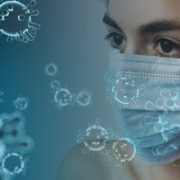As public health officials everywhere are scrambling to find tangible solutions to the coronavirus pandemic, early results from a new study from the University of Southern California and Los Angeles County Public Health show that the infection may be more widespread than the actual confirmed case numbers suggest.
The preliminary estimate means that the actual number of positive cases of the COVID-19 virus is between 28 to 55 times higher than the 7,994 confirmed cases that were reported throughout early April. In terms of figures, that means that between 221,000 adults and 442,000 adults may have been infected with COVID-19 at one point.
This means that a significant number of adults in the county may have developed an antibody to the pathogen. In other words, if the results are true and representative of the pandemic in LA County, then about 2.8% to 4.1% of adults in the county possess the antibody.
“These results indicate that many persons may have been unknowingly infected and at risk of transmitting the virus to others,” said Dr. Barbara Ferrer, director of LA County Public Health during the daily press briefing on Monday, April 20.
Ferrer shared that the study’s findings help to better understand how many people, at some point, have tested positive for the virus.
These conclusions are based on results from 11 drive-thru antibody testing held on April 10 and 11 at six different sites throughout the county. About 863 people participated in the study, a group of participants that researchers said was chosen as a representative of the county’s population.
Moreover, if the data is correct, it would mean that the county’s fatality rate is lower than originally estimated. The death toll in LA County is at 663 individuals as of Tuesday, excluding Long Beach and Pasadena.
Though the early study has not been peer-reviewed by the scientific community at large, researchers plan to test roughly 1,000 participants in the forthcoming weeks to paint a clearer picture of the pandemic in the Southland.
“We haven’t known the true extent of COVID-19 infections in our community because we have only tested people with symptoms, and the availability of tests has been limited,” said Neeraj Sood, professor of public policy at USC and lead investigator of the study. “The estimates also suggest that we might have to recalibrate disease prediction models and rethink public health strategies.”
Although the antibody testing sheds more light on the spread of the virus by identifying past infection, both USC experts and county officials believe that polymerase chain reaction (PCR) testing should be expanded to diagnose current infections.
But as the scientific and medical community move forward with these efforts to expand testing of all kinds and to find explanations and solutions to the COVID-19 virus, public health officials maintain the importance of physical distancing.
“This does, for me, reinforce the need for everyone to continue to stay home to observe all of our physical distancing requirements, because there are many, many people throughout the county who are positive for COVID-19 who may not be showing any symptoms,” Ferrer shared, adding that physical distancing also helps protect those most vulnerable to the virus. (Klarize Medenilla/AJPress)







